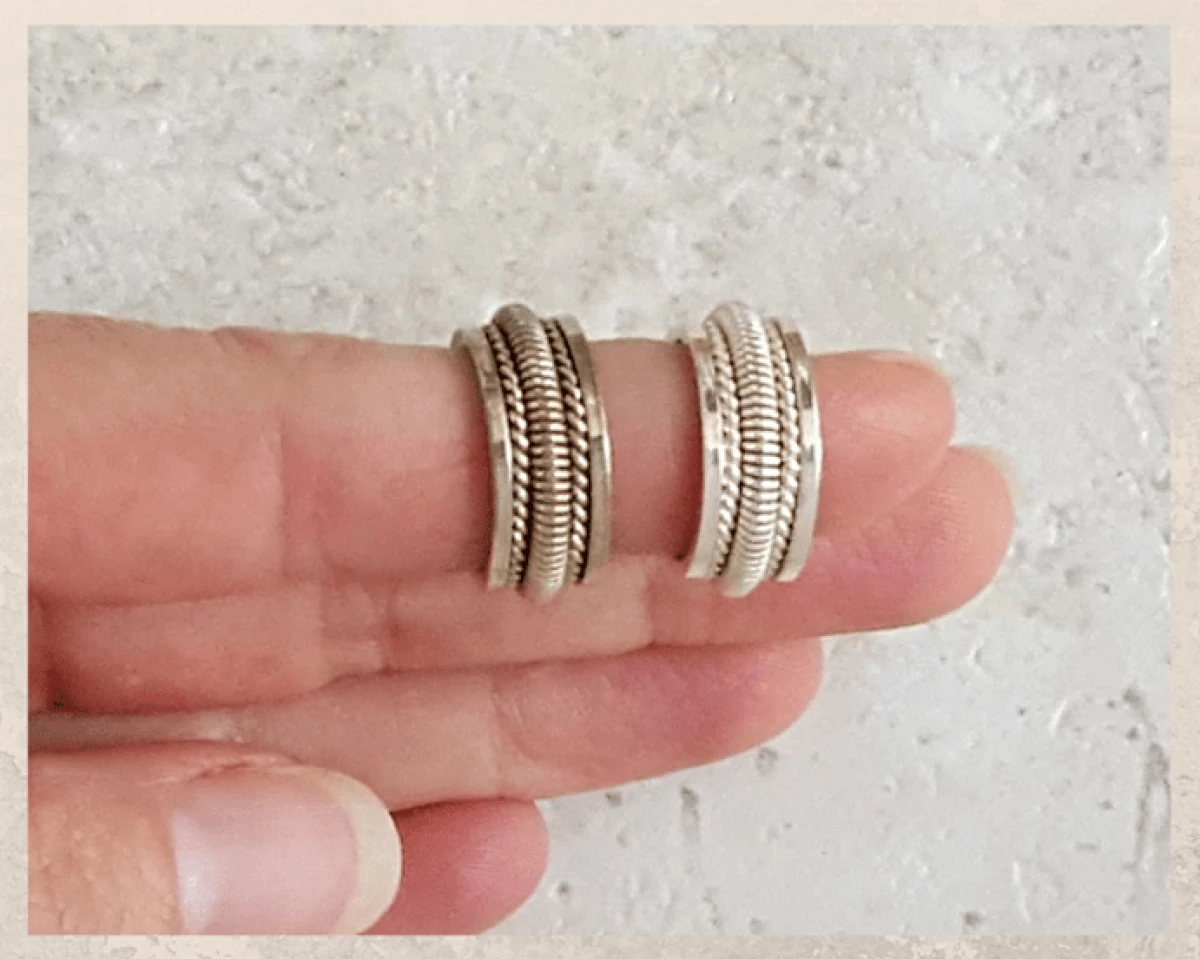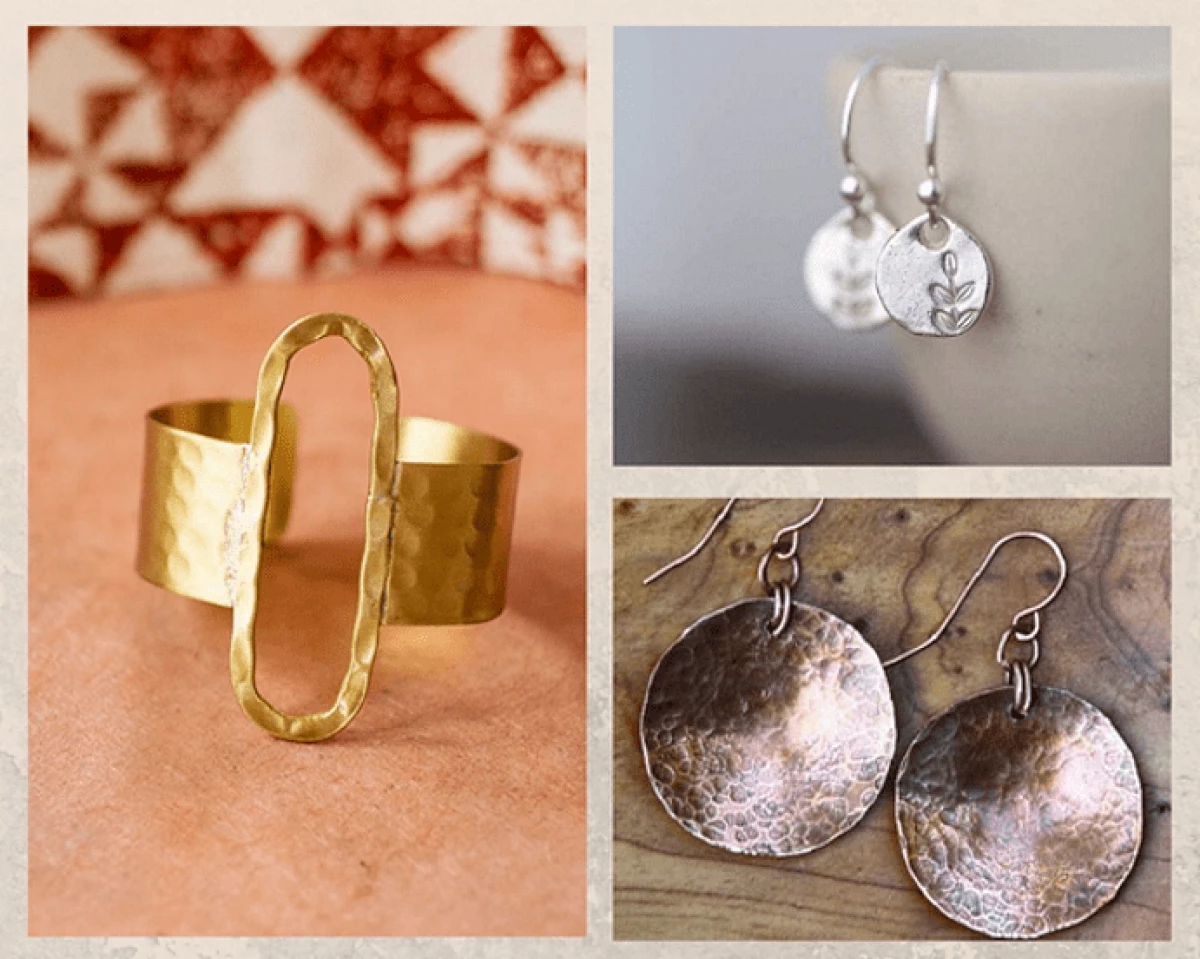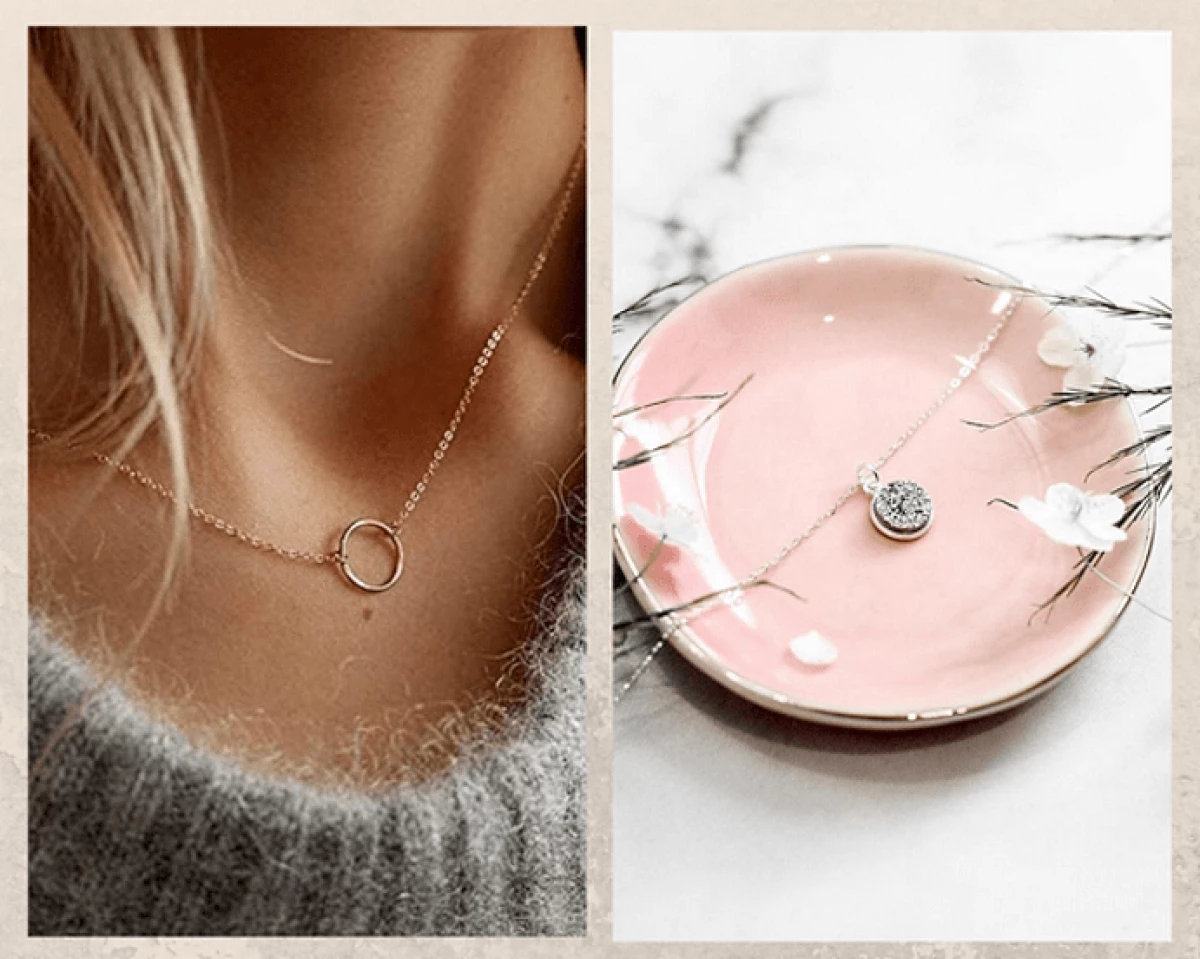Choosing jewelry, we first look at the design, then - on the price tag. And it would be nice to look at the composition: it depends on it, how the metal in the sock will behave. Some of them quickly darkened or dull, others - remain unchanged even many years later.
You can wear decorations from any metals that do not cause allergies from you - and precious, and no. But the metals prone to darkening or dulling will have to be cleaned more often.

Why metal darmest
In jewelry, precious and non-precious metals are used, as well as their alloys. The tendency to darkening or dulling is determined by the chemical properties of the material - how it reacts to contact with air, water, leather. Severe two types of reactions:
- Sweat. During socks, the metal is in contact with air and moisture, as well as the chemical elements contained in them. A chemical reaction occurs - and a thin dull layer of corrosion appears on its surface. So the decorations fasten or discolored.
- Patina. It occurs on decorations from copper and its alloys. Developed for a long time, has a green, gray or brown shade. Sometimes it is applied specifically to give the product vintage look.
For example, pure gold will not fade and does not change the color. But the metals included in the gold alloy (silver, copper, nickel) are oxidized. For this reason, decorations from low-line gold will eventually fill.

Metals that darken
Metals tend to dullness:
- copper;
- brass;
- bronze;
- silver.
Copper - metal orange-red. Under the influence of air and moisture it is oxidized, it acquires a reddish tint and a blue-green patina. Copper is one of the main causes of sweating of jewelry alloys.
Brass - copper alloy with zinc. It is often used to create jewelry, has a bright golden color. Quickly dumps under the influence of moisture and air, over time is covered with a greenish flare.
Bronze - Durable copper alloy with tin. Like other copper alloys, quickly dumps, reacting to moisture and air. On the surface of the copper there is a greenish flare, which can paint the skin.
Pure silver usually does not respond to the atmosphere. But it reacts with sulfur molecules contained in the air, forming silver sulfide: it is he who gives a dark black flare with silver jewelry. In jewelry, silver 925 samples are most often used, which contains copper, zinc and nickel - metals subject to oxidation. They will make the decoration faster.

Metals that can darken
Decorations will save their color for a long time if it is:
- gilding;
- pure silver;
- stainless steel.
The jewelry with gilding is dark at different speeds - depending on which metal is used as the basis. If the decoration is made of copper, brass, bronze or nickel, then loses its shine faster.
Silver 999 samples contains 99.9% of the noble metal. When creating decorations, it is rarely used, but if used, it almost does not darken.
Stainless steel does not really rust: the alloy is resistant to corrosion and oxidation. And yet, over time, he can change the original shade if wearing decorations often and not care for them.

Metals that do not darken
Decorations from these metals remain unchanged:
- gold;
- platinum;
- niobium;
- titanium;
- tungsten (carbide);
- palladium.
Gold is one of the most inert metals. Decorations made of pure gold will not fade, but they almost do not meet them: due to softness, alloying components are added to the metal. Frequency gold alloys shade do not change.
Platinum - does not darken, although over time it can slightly change the shade. This is not caused by oxidation, but by dents and scratches on the metal, which accumulate dust. Some collectors are appreciated by such a "patina", they do not specifically remove it.
Niobium - inert metal. Does not react with water or air. It remains brilliant throughout the service life.
Titanium is resistant to dulling, corrosion and rust. It does not react to water and air remains brilliant. Requires minimal care.
Tungsten - the hardest metal used to create jewelry. In jewelry, tungsten carbide is used: it does not rust, does not fade and does not form patches. There are also industrial tungsten - low quality, cheap, inclined to corrosion.
Palladium - metal, in color resembling white gold. For a long time it remains brilliant, does not change the color.

Prevention measures
If you love jewelry and decorations from precious metals, you probably know that they need regular care. Under normal conditions, they are slower slower. Avoid:
- salted water;
- citrus
- sulfur.
Environmental factors, such as pollution and humidity, also play an important role. It is advisable to store decorations indoors with a low humidity level - for example, in the bedroom, and not in the bathroom.
Regularly polish the decorations with a soft cloth, especially if they contain silver or copper: it will help them stay longer in shape. In addition, this is another reason to get decorations from the box and admire them.
